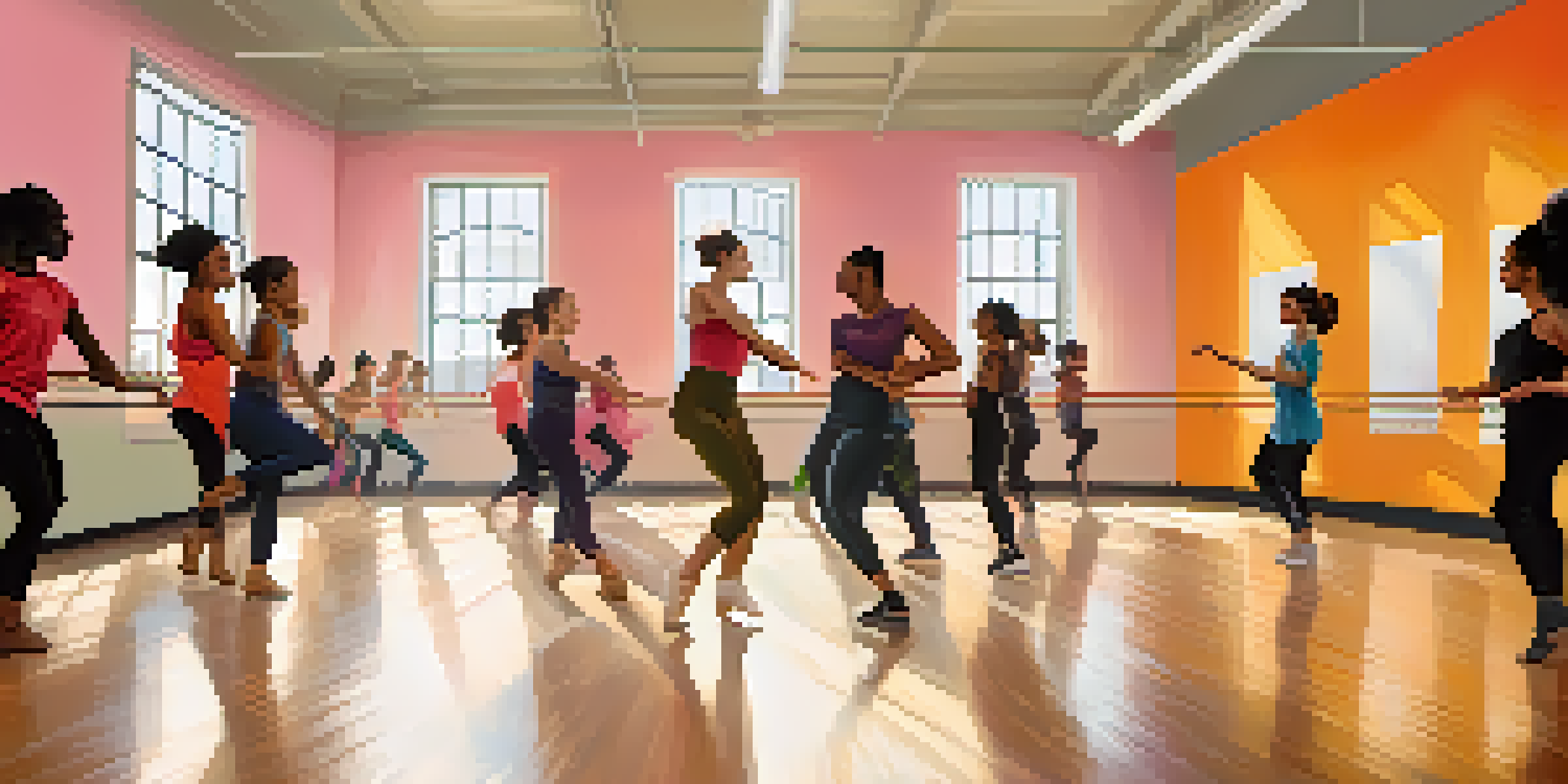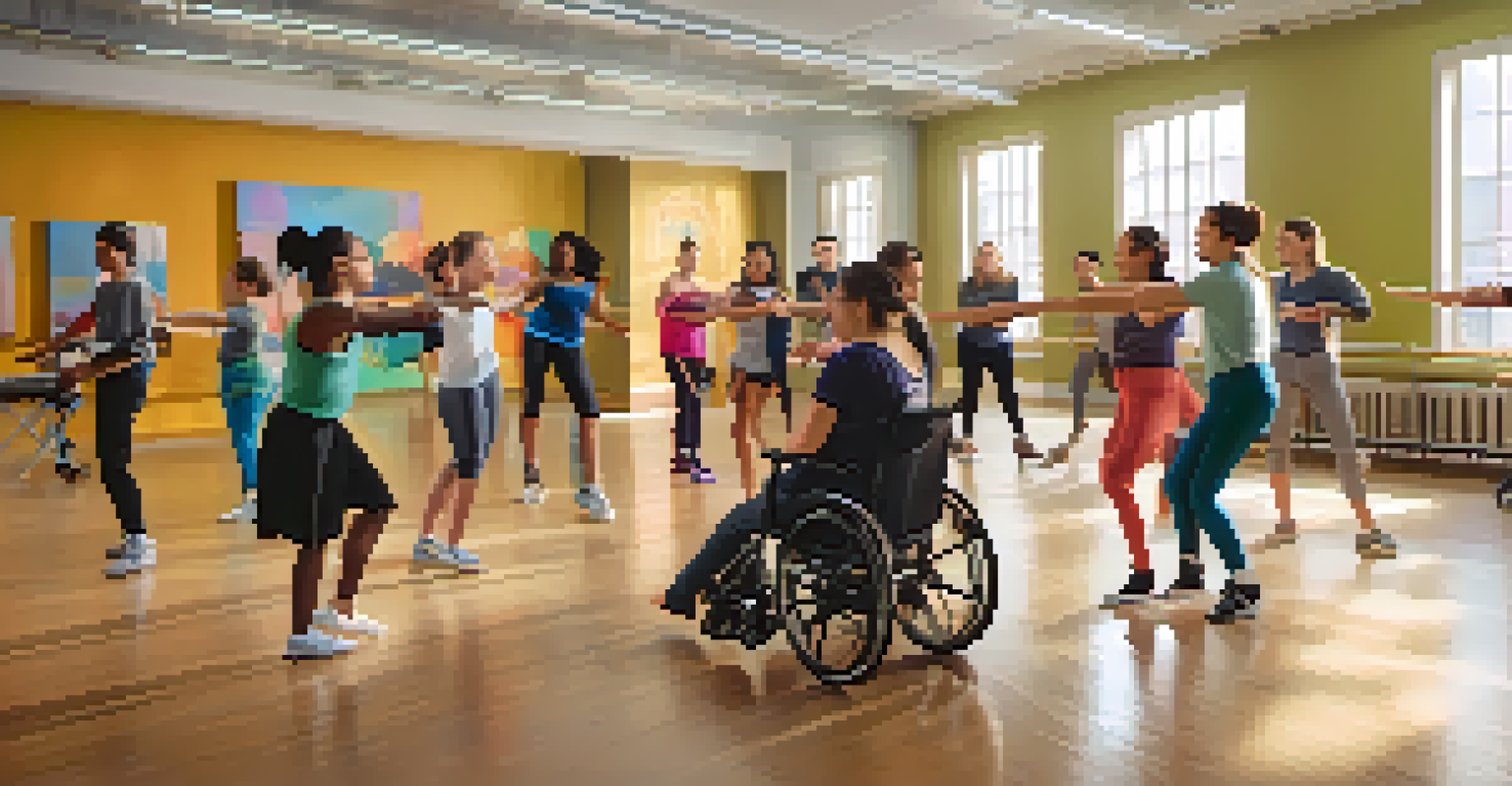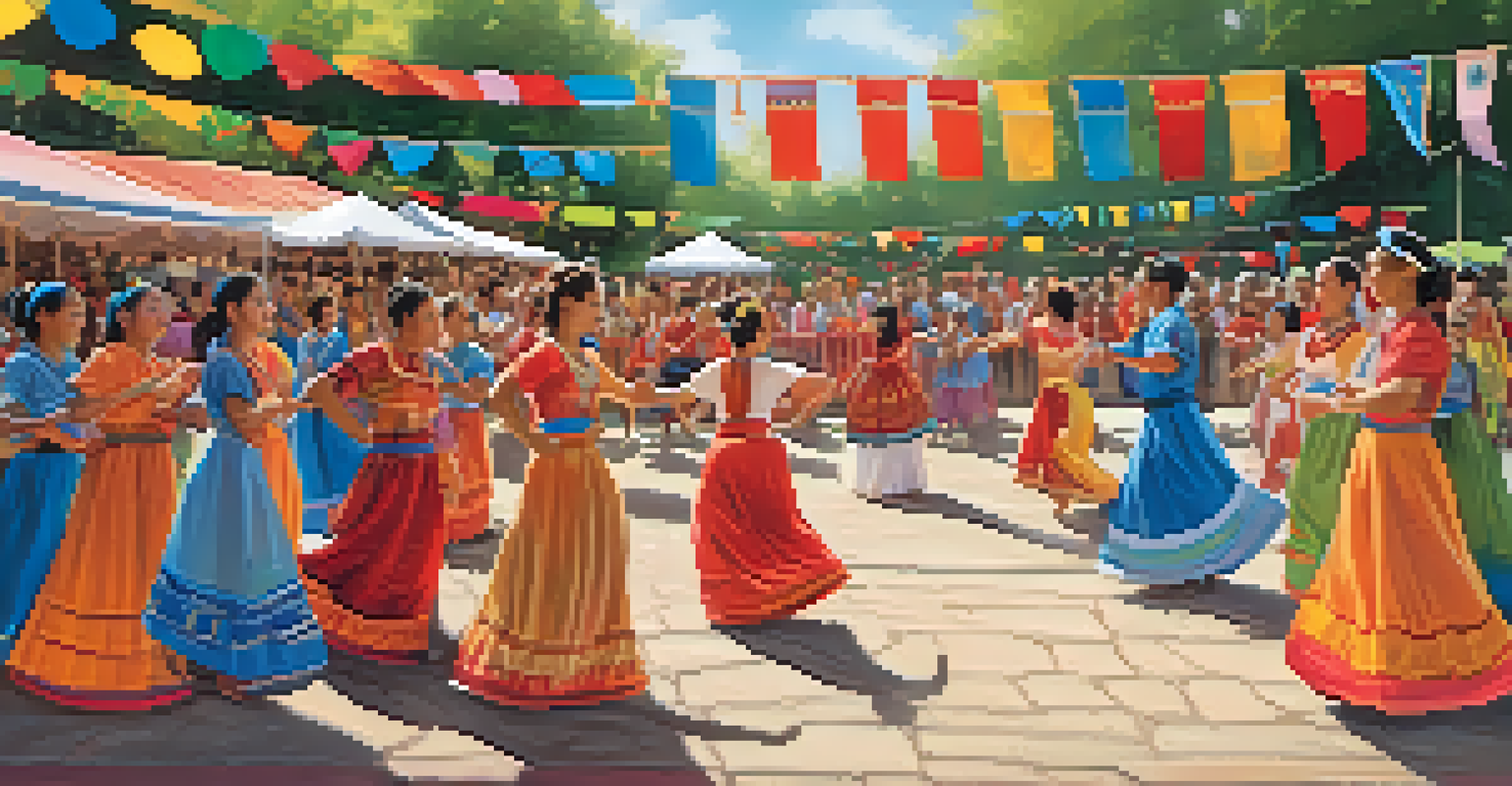Creating Inclusive Dance Programs for Diverse Student Bodies

Understanding Diversity in Dance Education
Diversity in dance education goes beyond just the styles taught; it encompasses the variety of backgrounds, cultures, and abilities of students. Acknowledging this diversity allows programs to be more reflective of the community they serve. For instance, incorporating different dance styles such as hip-hop, ballet, or traditional folk dances can resonate with students from various cultural backgrounds. This not only enriches the curriculum but also fosters an environment where everyone feels represented and valued.
Diversity is not about how we differ. Diversity is about embracing one another's uniqueness.
Moreover, understanding diversity means recognizing that students come with different learning styles and physical abilities. Some may require adaptive techniques to participate fully, while others may thrive in a more traditional setting. By embracing these differences, dance educators can tailor their programs to be more inclusive and engaging for all students. This could involve offering classes at various difficulty levels or providing alternative methods for learning choreography.
Ultimately, an inclusive approach to dance education cultivates a sense of belonging among students. When learners see themselves reflected in the curriculum, they are more likely to engage, participate, and thrive. This not only enriches their personal dance journey but also contributes to a vibrant, diverse dance community.
Creating a Welcoming Environment in Classes
A welcoming environment is crucial for encouraging participation in dance programs. This can start with simple gestures like greeting students warmly and creating an open space for dialogue. Encouraging students to express their ideas and preferences fosters a sense of ownership and belonging. For example, asking students about their favorite dance styles can help tailor classes to their interests, making them feel more engaged.

Additionally, physical space plays a significant role in inclusivity. Ensuring that studios are accessible to all students, regardless of their physical abilities, is essential. This might involve removing obstacles, providing ramps, or offering designated spaces for wheelchair users. A well-designed space not only enhances the dance experience but also demonstrates a commitment to inclusivity.
Embrace Diversity in Dance Education
Incorporating various dance styles and recognizing different backgrounds fosters a more inclusive and engaging learning environment.
Finally, promoting positive interactions among students is key to building a welcoming environment. Activities that encourage teamwork, such as group choreography projects, can help break down barriers and foster friendships. When students collaborate and support one another, the dance class transforms into a community where everyone feels valued and empowered.
Adapting Curriculum for All Skill Levels
An inclusive dance program should accommodate all skill levels, ensuring that every student finds joy and challenge in their learning. This can be achieved by offering multiple levels of classes, from beginner to advanced. For instance, a beginner class could focus on foundational techniques, while advanced classes might explore more complex choreography. This tiered approach allows students to progress at their own pace without feeling overwhelmed.
Inclusion is not a matter of political correctness. It is the key to growth.
Incorporating varied teaching methods is another effective strategy. Visual learners might benefit from video demonstrations, while auditory learners could thrive with verbal instructions. By mixing up teaching styles, instructors can cater to different learning preferences, making the curriculum more accessible. This adaptability not only enhances student understanding but also builds confidence in their abilities.
Finally, providing opportunities for students to showcase their skills can motivate them to push their boundaries. Organizing performances or informal showcases gives students a platform to express themselves and celebrate their progress. This not only reinforces their learning but also fosters a supportive community where achievements, big or small, are celebrated.
Incorporating Cultural Awareness in Dance Programs
Cultural awareness is vital in creating an inclusive dance program. Teaching about the origins and significance of various dance styles can enrich students' understanding and appreciation. For example, a lesson on salsa could include its historical roots in Latin American culture, providing context that enhances the learning experience. This approach not only respects the art form but also educates students about diversity.
Additionally, inviting guest instructors from varied backgrounds can bring fresh perspectives to the curriculum. These instructors can introduce unique techniques and cultural narratives, fostering a deeper connection to the dance styles being taught. This practice not only diversifies the learning experience but also highlights the richness of different dance traditions.
Create Welcoming Classrooms
Building a supportive and accessible atmosphere encourages participation and helps students feel valued in their dance journey.
Moreover, encouraging students to share their own cultural backgrounds can enhance the curriculum. Assigning projects where students explore their heritage through dance allows them to express their identities creatively. This not only promotes inclusivity but also builds a stronger bond among students as they learn from each other's experiences.
Training Instructors in Inclusive Practices
Proper training for instructors is essential in creating and maintaining inclusive dance programs. Educators should be equipped with the knowledge and tools to address the diverse needs of their students. This could include workshops on adaptive teaching techniques, cultural sensitivity, and understanding different learning styles. When instructors feel confident in their abilities, they can better support their students.
Additionally, fostering a culture of continuous learning among instructors encourages them to seek out new strategies for inclusivity. Regular professional development sessions can help teachers stay informed about best practices and emerging trends in dance education. This commitment to growth not only benefits the instructors but ultimately enhances the student experience.
Lastly, creating a mentorship system where experienced teachers guide newcomers can help build a supportive community within the program. This collaborative approach allows instructors to share their insights and experiences, fostering a culture of inclusivity and understanding. When educators work together, they can better cultivate an environment where every student feels welcome.
Engaging Families and Communities in Dance Education
Engaging families and communities is a vital component of inclusive dance programs. By involving family members in the learning process, programs can create a stronger support system for students. Hosting open house events where families can observe classes or participate in workshops fosters a sense of community and connection. When families are engaged, students are more likely to feel supported in their dance journeys.
Additionally, collaborating with local community organizations can enhance the inclusivity of dance programs. Partnerships with cultural centers, schools, or advocacy groups can provide resources and opportunities for outreach. For example, offering free or subsidized classes to underrepresented communities can help break down financial barriers and encourage participation.
Engage Families and Communities
Involving families and local organizations strengthens support systems and promotes inclusivity within dance programs.
Moreover, celebrating community events through dance can strengthen relationships and promote inclusivity. Organizing performances that highlight cultural diversity or community milestones can create a sense of pride and belonging among participants. This not only showcases the talent within the program but also emphasizes the importance of community in the dance education journey.
Evaluating and Improving Inclusivity in Dance Programs
Regular evaluation of dance programs is essential to ensure they remain inclusive and relevant. Gathering feedback from students, parents, and instructors can provide valuable insights into areas that may need improvement. Surveys, focus groups, or informal discussions can help identify challenges and successes within the program. This ongoing assessment allows for adjustments to be made as needed, ensuring that the program meets the evolving needs of its diverse participants.
Additionally, setting measurable goals for inclusivity can help track progress over time. These goals might include increasing participation rates among underrepresented groups or expanding the curriculum to include more diverse styles. By monitoring these objectives, programs can celebrate their successes and address any shortcomings in a timely manner.

Finally, fostering a culture of openness and adaptability is crucial for continuous improvement. Encouraging stakeholders to share their experiences and suggestions can lead to innovative ideas and practices. When everyone feels empowered to contribute to the program's growth, the result is a dynamic and inclusive dance environment that truly reflects the community it serves.